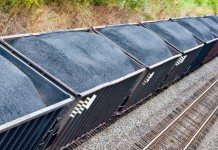
[miningmx.com] – THE strike contagion sweeping through South Africa’s
mining sector hasn’t yet been extended to the major thermal coal producers, but the
country’s delicate power supply and demand balance may be imperiled nonetheless.
The truck drivers strike, which is led by the SA Transport and Allied Workers’ Union
(Satawu), and now into its second week, could threaten an estimated 3,800MW of
Eskom’s power capacity; more than the margin by which the power utility’s supply
exceeds demand. Satawu is demanding a 12.5% wage increase against an offer of
8.5%.
The 3,800MW which is potentially vulnerable is the capacity generated by Eskom’s
return-to-service power stations: Komati, which has a 1,000MW capacity; Camden
(1,600MW); and Grootvlei (1,200MW).
As the mines on which these power stations were first built are exhausted, coal has to
be trucked to them.
Eskom said that the truck drivers’ strike was a concern but that the average coal
inventory at its power stations across the board was 44 days.
In the case of Komati, however, it has a relatively small stockyard with capacity for
only a few days. (Komati is not at full capacity, with six of its nine units operational).
As a result, power generated from these stations is vulnerable to coal supply
interruptions.
“There’s a bit of distress regarding the availability of petrol owing to the truck drivers
strike, but you can also throw loadshedding into the mix as well,’ a coal industry
source told Miningmx.
The trucking strike is also affecting domestic trade of coal. Bevan Jones, a coal trader
with London Commodity Brokers, said in a recent note: “The domestic coal market is
in some turmoil as the transport strike has affected supply and consumables
deliveries’.
“With at least two coal mines also experiencing labour strikes (Coal of Africa’s
Mooiplaats and Petmin’s Somkhele anthracite mine), there have been some force
majeure notifications both locally and for FOB (Freight-on-Board) deliveries,’ Jones
said.
Analysts said that the likelihood of large thermal coal miners embarking on strikes in
the same wildcat manner as the gold and platinum producers was considered less
likely, owing to the fact the coal mines were more mechanised and employed more
skilled, higher-paid staff.
Yet with Kumba Iron Ore announcing today that some of its workers were striking at
the Sishen mine, an operation that paid handsome dividends to labour, it would
appear that the strike contagion is becoming more unpredictable.










